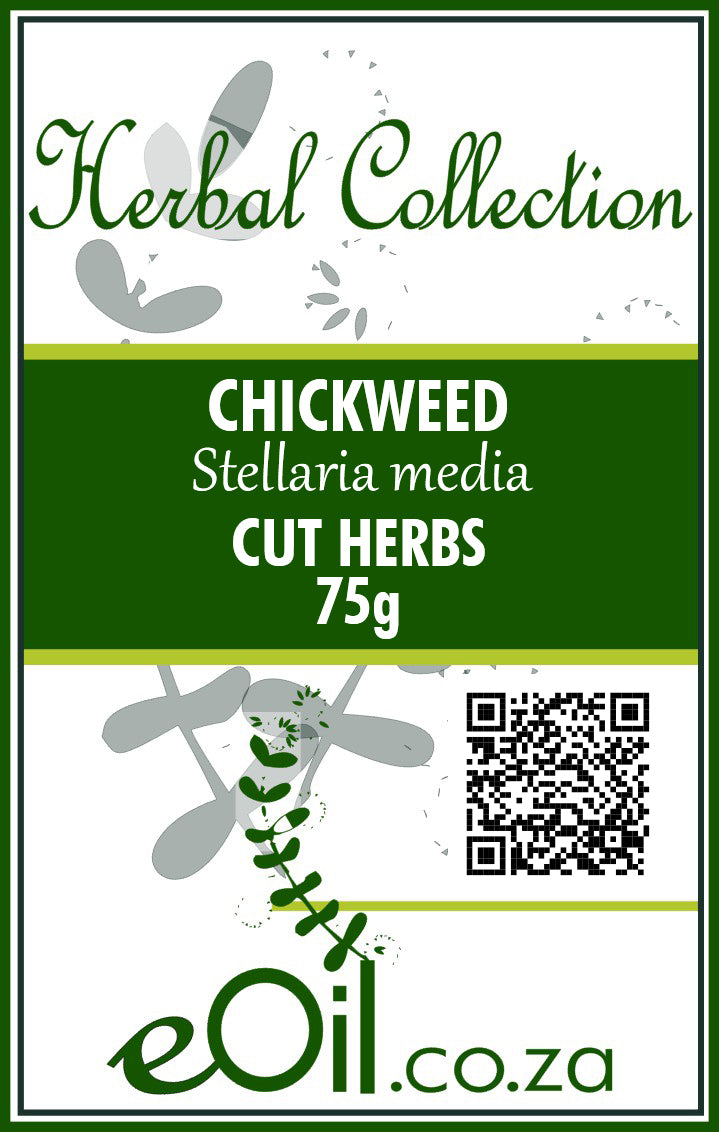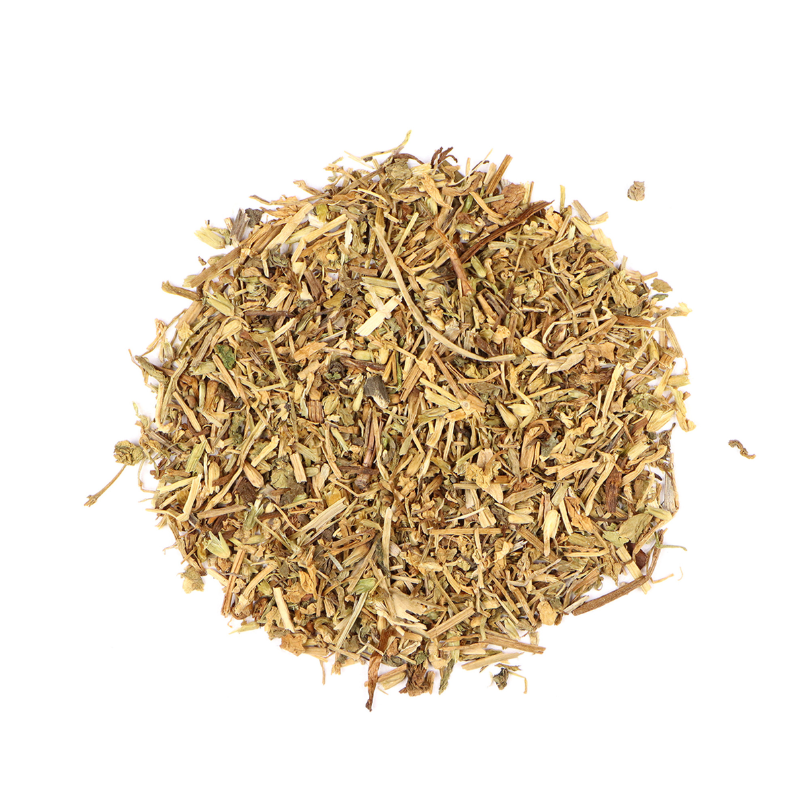Chickweed Herb Cut - Herbal Collection
Chickweed Herb Cut - Herbal Collection - 75 GR is backordered and will ship as soon as it is back in stock.
Description
Description
Chickweed Herb Cut (Stellaria media) is a mild, leafy botanical known for its delicate flavor and versatility in teas, infusions, and homemade skincare blends.
A traditional favorite for garden-to-cup wellness, it is 100% pure, naturally dried, and free from additives, ideal for natural living projects.
TRADITIONALLY USED FOR
Chickweed (Stellaria media) is a common herb found in many parts of the world.
It has been traditionally used for centuries in various cultures for its medicinal properties and health benefits.
Some of the traditional uses, properties, and benefits of chickweed herb include:
- Skin conditions: Chickweed has been used topically to soothe and treat skin conditions such as eczema, psoriasis, and rashes. It is known for its anti-inflammatory and antipruritic (anti-itch) properties, which can help to relieve itching and inflammation.
- Wound healing: Chickweed has been traditionally used to promote wound healing and reduce inflammation in cuts, scrapes, and burns. Its soothing properties can help to relieve pain and discomfort.
- Respiratory health: Chickweed has been used in traditional medicine as an expectorant to help clear mucus from the respiratory tract. It has been used to treat conditions such as bronchitis, asthma, and coughs.
- Digestive health: Chickweed has been used to soothe digestive issues such as constipation, bloating, and indigestion. Its mild laxative properties can help to regulate bowel movements and improve overall digestive health.
- Anti-inflammatory properties: Chickweed has been traditionally used for its anti-inflammatory properties, which can help to reduce swelling and inflammation in various conditions such as arthritis and joint pain.
- Diuretic properties: Chickweed has been used as a diuretic to help flush excess fluid from the body, which can be beneficial for those with edema, kidney or bladder issues, and high blood pressure.
- Nutrient-dense: Chickweed is a highly nutritious herb, containing vitamins A, C, and D, as well as minerals such as calcium, magnesium, potassium, and iron. It can be consumed as a food source to supplement one's diet and provide essential nutrients.
It is important to note that while chickweed has been traditionally used for various health issues, scientific evidence supporting these uses is limited. It is always best to consult with a healthcare professional before using chickweed or any other herbal supplement, especially if you have any pre-existing medical conditions or are taking medications.
INFORMATION
Source : http://www.wikiphyto.org/wiki/Mouron_des_oiseaux
Reference on http://www.wikiphyto.org
Translation in English by Google Translate (go to the page of the source linked | on Chrome cellphones go on the 3 dots on the top right and select translate in your preferred language | on laptop right click your mouse and select option translate when hoovering on the page
plant name
Chickweed , chickweed , morgeline
International Latin denomination
Stellaria media (L.) Vill.
botanical family
Caryophyllaceae
Description and habitat
- Small, very common, cosmopolitan annual plant considered a weed
- The vernacular name comes from the fact that the seeds are liked by birds
- Not to be confused with scarlet pimpernel ( Anagallis arvensis ), which resembles it in plant habit and leaf appearance
History and tradition
Parts used
Dosage forms available
Usual dosages
Composition
Main components of the plant
- Triterpenes
- Saponosides
- Coumarins
- Phytosterols
- Flavonoids ( apigenin , rutin )
- Organic acids, vitamin C
Main components of buds or young shoots
Main components of essential oil
Properties
Plant properties
Bud properties
Properties of essential oil
Directions
Indications of the whole plant (phytotherapy)
- Obesity [1]
Indications of the bud (gemmotherapy)
Specific indications of essential oil (aromatherapy)
Known or suspected mode of action
Usual formulations
Regulations
Possible side effects and precautions for use
Bibliographic references
- Aller↑ Vasudeva N, Sharma SK, Rani N. Quality assessment and anti-obesity activity of Stellaria media (Linn.) Vill. BMC Complementary and Alternative Medicine 2012, 12:145 (3 September 2012) Abstract Provisional PDF
- Tamsyn SA Thring, Pauline Hili, Declan P Naughton. Anti-collagenase, anti-elastase and anti-oxidant activities of extracts from 21 plants. BMC Complementary and Alternative Medicine 2009 [1]
CAUTION
Store in a cool, dry place, away from light. Keep tightly closed, away from the reach of Children and pets.
Do not exceed the daily dose.
This product is not intended to prevent or cure any form of illness or disease.
If you are pregnant or nursing ; If you have a medical condition or are in the course of medical treatment ; If you are programmed for theater/operation in the near future, please consult your healthcare practitioner before using this product.
This product cannot replace a varied and balanced diet and a healthy lifestyle.
This product has not been evaluated by the SAHPRA for its quality, safety or intended use.
For More Information please check our General Safety Herbal products Page






